Using Real Time Ultrasound Assessment for Muscle Function at Gold Coast Physio & Sports Heath
Words by APA Sports Physio Britt Caling
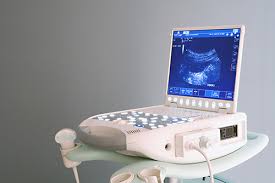 Real time ultrasound (RTUS) is a medical technology that has great use in Physiotherapy for imaging of muscles, tendons, ligaments and other body tissues and structures.
Real time ultrasound (RTUS) is a medical technology that has great use in Physiotherapy for imaging of muscles, tendons, ligaments and other body tissues and structures.
Ultrasound devices use high frequency sound waves (Ultrasound waves that are completely safe to human tissues) to view tissues and structures. There is a large volume of scientific research confirming the validity, reliability and usefulness of RTUS.
Physio’s can use RTUS to look at the size and health of muscles and the activation or timing of onset of muscle groups. The ‘real-time’ aspect to is allows imaging technique during muscle contractions, movement or activity so we can define muscle activations that are sometimes not apparent from viewing only your movement or surface palpations.
Why Use RTUS?
The following extract is written by Physiotherapist Dr Alison Grimali, Physiotec, Brisban. Dr Grimaldi has pioneered the use of RTUS for assessment and retraining of the deep musculature of the hip and groin. She has been using these techniques successfully for over 10 years, and teaches these techniques to other physiotherapists around Australia and abroad, including the Physio’s at Gold Coast Physio & Sports Health
While we can see and palpate the superficial muscles, it is not possible to accurately assess size, quality or activation patterns of deep muscles, as these muscles lay beneath other larger, more superficial muscles. While superficial muscles are generally our power producers for movement, the deeper shorter muscles hug around our joint providing protection, stability and fine control of movement. Researchers have shown that there are often ongoing problems in our deep muscle systems in persisting pain states or recurrent injury.
General strength programs that cause persistent pain or injury sometimes fail to normalise function in the deep muscular system, even though the superficial system has become larger and stronger. This can sometimes make the problem worse – if you have larger muscles placing greater loads across joints that are relatively unprotected by an inefficient deep system, worsening pain or re-injury can occur.
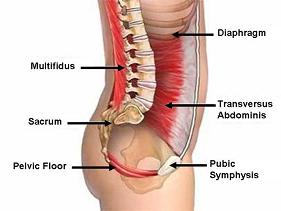 Deep muscles are often inhibited and superficial muscles overwork to compensate in persistent pain states or recurrent injuries, resulting in muscle imbalance, pain and stiffness, and reduced efficiency and physical performance (Dr Alison Grimaldi, Physiotec, 2015)
Deep muscles are often inhibited and superficial muscles overwork to compensate in persistent pain states or recurrent injuries, resulting in muscle imbalance, pain and stiffness, and reduced efficiency and physical performance (Dr Alison Grimaldi, Physiotec, 2015)
Deep muscles are particularly prone to inhibition. We know from research that pain inhibits deep muscles, and a lack of weightbearing or poor postures can also negatively influence deep muscles around the spine and pelvis. The superficial muscles have been shown to be much less susceptible to inhibition, so if the deep system is not doing its job the brain ‘upregulates’ the superficial system to ensure you can still get from A to B.
When superficial muscles try to do the ‘stabilising’ job:
1. You become much less efficient using lots more energy for each task (remember you usually only use small muscles to do this task with less metabolic cost) and
2. The underlying joints are exposed to much higher compressive loads and shear forces imposed by the big superficial muscles. This can make you feel tight, rigid or less fluid in your movements, more fatigued, and more painful, and the loss of efficiency may reduce athletic performance.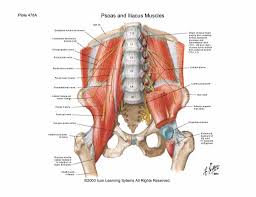
Real time ultrasound provides an incredible opportunity to assess the health and function of these muscles, not only at rest, but during active movement.
Physio’s can use RTUS to train you how to consciously activate your deep muscle systems and protect your joints more effectively prior to and throughout movement. It also helps us to teach you to ‘downregulate’ your superficial system making you less rigid and more efficient in your movements, and then we can strengthen the both systems together in safe and balanced way.
Real time ultrasound provides a unique window into the function of our deep muscles during movement. This level of information cannot be provided by visual assessment, palpation or any other imaging modality to date.
Stabilising muscles require specific training for normal functional recovery after an injury. This is facilitated by RTUS imaging which allows you and your therapist to view these muscles as they contract in real time, which also helps your therapist to prescribe specific exercises for faster recovery.
RTUS & Low Back Pain
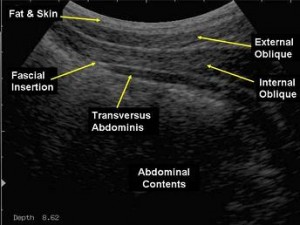 The greatest volume of research surrounds the use of real time ultrasound in the assessment and retraining of muscles around the trunk in those with back and pelvic pain. Ultrasound is used to assess and retrain muscles of the abdominal wall, deep lumbar stabilisers (multifidus), and the pelvic floor musculature. Retraining these muscles with real time ultrasound is often an excellent first step in the recovery of optimal function.
The greatest volume of research surrounds the use of real time ultrasound in the assessment and retraining of muscles around the trunk in those with back and pelvic pain. Ultrasound is used to assess and retrain muscles of the abdominal wall, deep lumbar stabilisers (multifidus), and the pelvic floor musculature. Retraining these muscles with real time ultrasound is often an excellent first step in the recovery of optimal function.
A RTUS image of retraining of the abdominal wall – Transversus abdominis. Layers of muscles are visualised on the screen and your physio is able to show you the movement of the correct muscles when you get the contraction correct so you are able to ‘feel’ a correct muscle contraction.
RTUS for Hip, Groin Pain & Knee Pain
Optimal function in the deep trunk and hip musculature is the foundation for optimal weightbearing function and ability to transfer load between the legs and body. RTUS can be useful for almost any musculoskeletal condition of the hip and groin.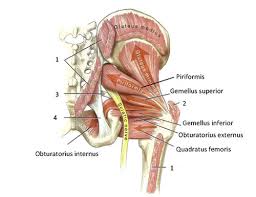
RTUS is very useful for imaging your inside quads muscle (Vastus meidalis oblique- VMO) when it is contributing to patella-femoral, or knee cap, pain. Or pain related to poor functioning of the muscles of the back of your knee joint.
RTUS for Foot Intrinsic Muscles
Ultrasound is a fantastic tool for assessing and retraining the deep muscles that lie within your foot. These muscles are crucial for support of the arches of your feet and for helping you monitor and adapt to the surface on which you are walking or running. They connect you to the earth and sensors within these muscles provide essential information for your brain and nervous system to help you plan how you should balance your body weight, or where you might place your next foot.
These muscles often become inhibited and atrophied due to lack of stimulus – too much time sitting, not enough time barefoot or on stimulating surfaces (not that you should through off your shoes if you have foot pain – the muscles need to be strengthened first). Like other deep muscles these deep short muscles can be difficult to assess, especially when you are standing.
Ultrasound however allows us to see these muscles and provides feedback on-screen so you can be sure you are activating them properly. This is great for plantar fasciopathy (plantar fasciitis), forefoot pain (metatarsalgia, Mortons neuroma), bunions (hallux valgus), arthritis, tibialis posterior dysfunction/ tendinopathy, shins splints (medial tibial stress syndrome MTSS) and many more conditions of the foot, ankle and shins.
How is RTUS Used at Gold Coast Physio & Sports Health?
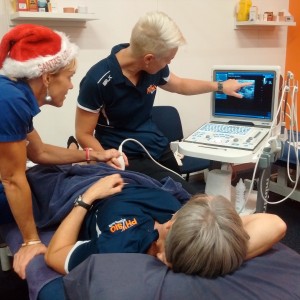 Real time ultrasound imaging is a painless, non-invasive procedure and may be used in standing, sitting or lying. Your Physio will place a small probe on your skin and change the movement and placement of the probe until an ideal picture of the muscles are viewed on the screen for you to see.
Real time ultrasound imaging is a painless, non-invasive procedure and may be used in standing, sitting or lying. Your Physio will place a small probe on your skin and change the movement and placement of the probe until an ideal picture of the muscles are viewed on the screen for you to see.
Your Physio will then ask you to perform different movements to assess the level of contraction and timing of contraction of different muscles beneath the probe. On the screen you will be able to see these movements and correct cues can be found to help you find the ‘correct’ way to contract the deep stabilising muscles.
A stabilising exercise control program can then be used with these cues to improve the way you move and reduce pain and other symptoms.
What appointment do I need to Book for RTUS, and how often at GCPSH?
A 45min Physio appointment (or extended physio appointment) should be booked if you think you need real time ultrasound assessment of muscle function. If you are unsure if RTUS can benefit you, discuss it with your Physio.
The number of appointments you may need from RTUS varies between each person from 1 to 4 depending on:
– the function of your deep muscle system and level of inhibition
– your ability to find the correct cues for correct movement in each session
– your ability to apply to correct cues into a movement control exercise program, such as Pilates
– the progression of your rehab
It is likely you may only need one initial RUTS assessment, and then you may be advised to perform a number of weeks of an exercise control program, such as our small-group pilates classes. If your symptoms resolve, you may not need another RTUS assessment. If symptoms, stability or strength are slow to progress, you may benefit from intermittent review of your muscle function with RTUS over set periods of time.
A RTUS Physio appointment is able to attract a private health fund rebate.
A number of Physio’s at GCPSH have been specifically trained in the use of RTUS and are able to perform your RTUS assessment: Helen Sibbald, Ange Flack, Myles Burfield, Erin Fitzgerald, Rick Bain & Britt Caling
What to Bring for a RTUS Assessment a GCPSH?
Wear loose fitting clothes (not tights for women) so the probe can be placed in ideal positions. When assessing the pelvic floor, a moderately filled bladder is necessary for better visibility of pelvic floor muscles. For other assessments, there are no other requirements other than to bring yourself and a positive brain.
To book an appointment, phone 07 5500 6470, or book an Extended Physio appointment online via our website www.mygcphysio.com.au
